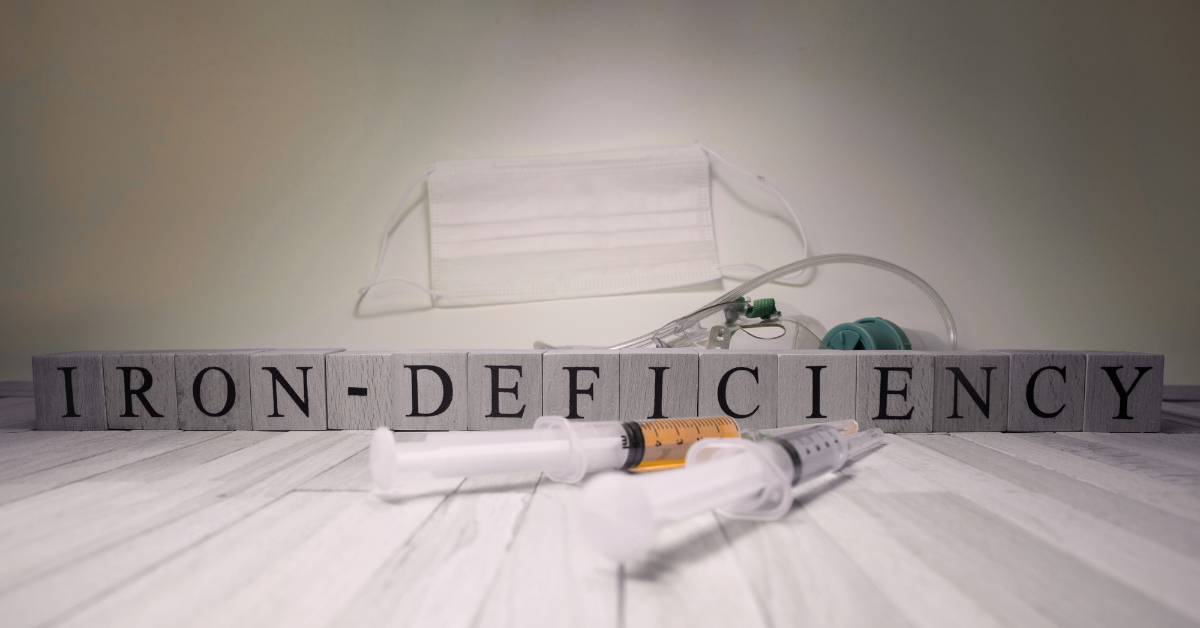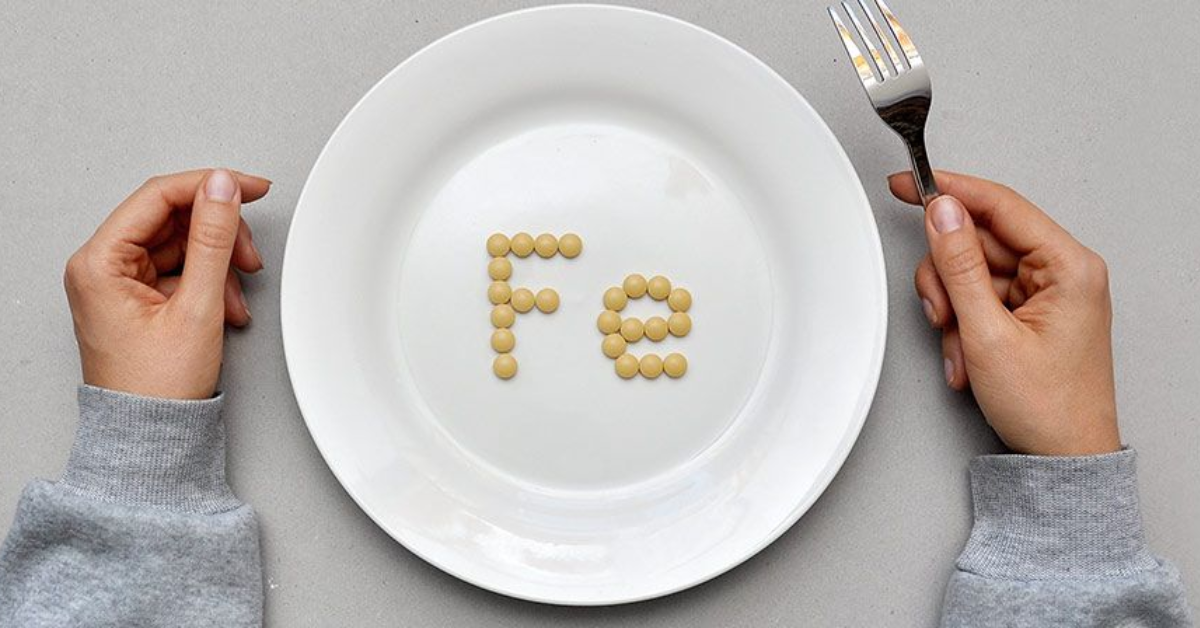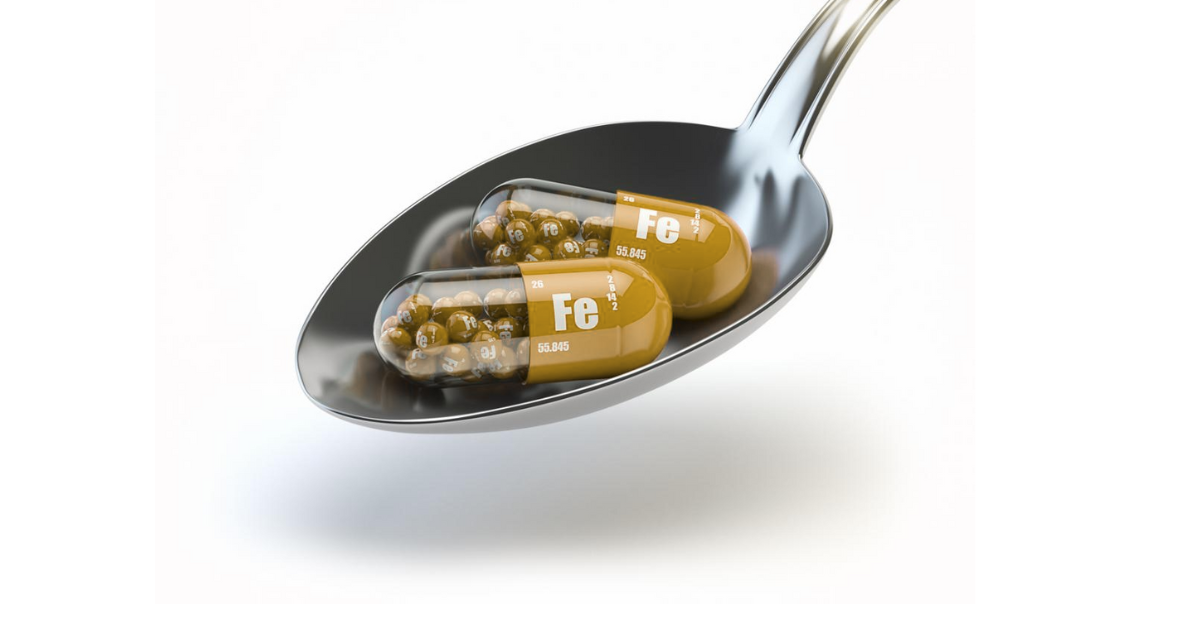Feeling Tired, Foggy, or Just Off? Let's Talk Iron.

Fatigue now, brain fog later, heart issues down the line—low iron snowballs fast. You know that 3 PM crash that sends you reaching for your fourth cup of coffee? That moment when you can't remember where you put your keys for the third time today? Or when climbing a single flight of stairs leaves you winded like you just ran a marathon? Here's the plot twist: your third espresso isn't a personality trait—it's a symptom.
Nearly one in three Americans may have undiagnosed iron deficiency, according to recent research (NBC News, 2024). That's roughly 100 million people walking around with what amounts to cellular suffocation, and most don't even know it. The kicker? Standard lab work often misses it entirely, leaving you feeling like garbage while your provider shrugs and says your numbers look "normal."
Iron deficiency isn't just about anemia—that's the final act of a much longer drama. Long before your red blood cells start waving white flags, your body has been quietly rationing iron like it's wartime. Your brain gets foggy, your energy tanks, your mood goes sideways, and your hair starts thinning. Sound familiar?

Iron 101 – The Unsung Oxygen Uber
Think of iron as the FedEx of your bloodstream—without it, oxygen deliveries stall, and your entire operation grinds to a halt. Iron doesn't just sit around looking pretty in your blood; it's the workhorse that makes hemoglobin possible, and hemoglobin is what carries oxygen from your lungs to every single cell in your body.
But iron's resume goes way beyond oxygen transport:
- Energy production at the cellular level: Iron is a key component of the cellular machinery that converts food into usable energy. When iron runs low, your mitochondria—those cellular powerhouses—can't function efficiently, leaving you feeling like your internal battery is perpetually at 20%.
- Brain function and neurotransmitter synthesis: Your brain is an oxygen-hungry organ, consuming about 20% of your body's total oxygen supply. Iron deficiency doesn't just mean less oxygen delivery; it also disrupts the production of dopamine, serotonin, and norepinephrine—the neurotransmitters that regulate mood, focus, and motivation (Yale Medicine, 2024).
- Immune system support: Iron plays a critical role in immune cell function. When you're iron deficient, your white blood cells can't mount an effective defense, leaving you more susceptible to infections and slower to recover from illness.
Here's where it gets interesting: your body is incredibly stingy with iron. Unlike water-soluble vitamins that you can pee out, iron is tightly regulated because too much can be toxic. This evolutionary safeguard becomes a problem in our modern world, where iron loss often outpaces our ability to absorb it from food.
Warning Signs Before Full-Blown Anemia: Sneaky Early Symptoms
Iron deficiency is like a master of disguise—it masquerades as everything from stress to aging to just being "out of shape." The symptoms creep up so gradually that most people adapt to feeling subpar, chalking it up to busy lifestyles or getting older. But your body is actually sending you distress signals long before anemia shows up on a blood test.
The fatigue that sleep can't fix: We're not talking about being tired after a long day. This is the bone-deep exhaustion that persists even after eight hours of sleep. You wake up feeling like you never went to bed, and by afternoon, you're fantasizing about crawling under your desk for a nap. Research from the University of Oklahoma suggests that iron deficiency can cause crushing fatigue and brain fog, particularly during hormonal transitions like menopause (OU Health Sciences, 2024).
Brain fog that makes you question your sanity: Trouble concentrating, memory lapses, and that feeling like you're thinking through molasses aren't just signs of stress. Iron deficiency directly impacts cognitive function because your brain isn't getting the oxygen it needs to fire on all cylinders. Studies have shown that even mild iron deficiency without anemia can impair memory, attention, and learning capacity (Everyday Health, 2024).
The weird cravings: Pica—the compulsive urge to chew ice, starch, or other non-food items—is one of the most specific signs of iron deficiency. If you find yourself crunching through bags of ice or have an inexplicable urge to chew on paper, your body might be trying to tell you something. This isn't just a quirky habit; it's a legitimate medical symptom that providers take seriously.
Hair thinning and brittle nails: Your body prioritizes iron for essential functions like oxygen transport, so cosmetic concerns like hair and nail health get shortchanged when supplies run low. If your hair is thinning or your nails are becoming spoon-shaped, iron deficiency might be the underlying cause.
.png)
Labs Lie (Sometimes)
Here's the frustrating truth: standard iron panels often miss iron deficiency, especially in its early stages. Most providers order a basic iron panel that includes serum iron and transferrin saturation. These tests can be normal even when your iron stores are running on empty.
The problem is that serum iron—the amount of iron floating around in your blood at any given moment—fluctuates wildly throughout the day and can be influenced by what you ate for breakfast. It's like checking your checking account balance to assess your overall financial health; it doesn't tell you anything about your savings.
- Ferritin is the real MVP: Ferritin is your body's iron storage protein, and it's a much more reliable indicator of your iron status. While conventional medicine considers low ferritin levels "normal," functional medicine providers know that optimal function requires much higher levels. Research suggests that ferritin levels below 30 can cause symptoms even when other iron markers appear normal (Bronson Health, 2024).
- The inflammation factor: Ferritin can be falsely elevated during inflammation, infection, or chronic disease. This is where things get tricky—you could have low iron stores but normal or even high ferritin if you have underlying inflammation. This is why comprehensive testing that includes inflammatory markers is crucial for accurate assessment.
Why So Many of Us Are Low
Women: Monthly Drain & Pregnancy Tax
Let's be real: being a woman is basically a monthly iron subscription service, except you're the one paying. Every menstrual cycle, women lose significant amounts of iron, and heavy periods can double or triple that loss. Research indicates that up to one-third of women of reproductive age in the United States may not have enough iron in their bodies (Yale Medicine, 2024).
The math is brutal. When you're losing substantial iron monthly through menstruation, you're operating at a deficit that's nearly impossible to overcome through diet alone.
Pregnancy amplifies the problem exponentially: During pregnancy, iron requirements skyrocket to support increased blood volume, placental development, and fetal growth. The National Institutes of Health reports that iron deficiency rates jump from 6.9% in the first trimester to 29.7% in the third trimester (NIH, 2024). More than 80% of women are iron deficient by their third trimester, according to recent studies (American Society for Nutrition, 2024).

Men: If You're Low, Something's Up
Iron deficiency in men is like a smoke alarm—when it goes off, you need to find the fire. Men don't have monthly iron losses, so deficiency usually signals an underlying problem that needs immediate attention.
Gastrointestinal bleeding is the usual suspect: In men and postmenopausal women, iron deficiency anemia is most commonly caused by bleeding in the gastrointestinal tract (NHS Inform, 2024). This could be anything from a bleeding ulcer to inflammatory bowel disease to colorectal cancer. The bleeding is often so slow and subtle that it's not visible, but it's enough to gradually deplete iron stores over time.

Diet & Gut Drivers
Even if you're not losing excessive amounts of iron, you might not be absorbing enough to meet your body's needs. This is where the modern diet and gut health crisis collide to create the perfect storm for iron deficiency.
The heme vs. non-heme divide: Not all iron is created equal. Heme iron, found in animal products, is readily absorbed by the body. Non-heme iron from plants is much harder to absorb (NIH, 2024).Absorption blockers are everywhere: Coffee, tea, dairy products, whole grains, and even calcium supplements can significantly reduce iron absorption when consumed with iron-rich foods. Tannins in coffee and tea can reduce iron absorption by up to 60%, which explains why that morning coffee with your iron-fortified cereal isn't doing you any favors.Gut health matters more than you think: Conditions like celiac disease, Crohn's disease, and even garden-variety gut inflammation can impair iron absorption. Any damage or inflammation in your small intestine can create iron deficiency even with adequate dietary intake.

The Next-Gen Approach (Test > Identify > Fix)
The best providers don't just run the same tired iron panel that's been missing deficiencies for decades. Forward-thinking practices—like Prosper Health, for instance—take a comprehensive, root-cause approach that actually identifies iron deficiency before it becomes anemia. More importantly, they figure out why it's happening in the first place.
- Advanced iron assessment beyond the basics: Comprehensive iron panels should include ferritin, serum iron, transferrin saturation, and soluble transferrin receptor—a marker that can detect iron deficiency even when ferritin is falsely elevated by inflammation. Smart providers also check inflammatory markers to ensure they're not missing iron deficiency masked by inflammation.
- Root cause investigation: Finding iron deficiency is just the beginning. The best providers dig deeper to understand why you're deficient. Is it excessive losses through heavy periods or GI bleeding? Poor absorption due to gut inflammation? Inadequate intake or increased needs? Thorough providers run comprehensive assessments to get to the bottom of your iron story.
- Personalized replenishment strategies: Not everyone needs the same iron replacement approach. Some people do well with gentle, food-based iron sources combined with absorption enhancers. Others need pharmaceutical-grade supplements or even IV iron therapy for rapid repletion. Good providers tailor the approach based on your severity, tolerance, underlying health conditions, and lifestyle factors.
- IV iron when oral isn't enough: For severe deficiency, poor oral tolerance, or conditions that impair absorption, IV iron can be a game-changer. IV iron bypasses the digestive system entirely, allowing for rapid repletion of iron stores. Recent studies show that IV iron is more effective than oral supplementation for many patients, particularly those with inflammatory conditions or heavy menstrual bleeding (AJMC, 2024).
Ready to start optimizing your iron status?
Here are 5 practical strategies that can make a real difference:
- Timing is everything: Take iron supplements on an empty stomach for maximum absorption, but if that causes nausea, take with a small amount of vitamin C-rich food like orange juice. Avoid coffee, tea, dairy, and calcium supplements for at least two hours before and after taking iron.
- Pair with vitamin C: Vitamin C can increase iron absorption by 3-4 times. Take your iron supplement with vitamin C, or eat iron-rich foods with vitamin C-rich foods like bell peppers, citrus fruits, strawberries, or tomatoes.
- Cook in cast iron: Cooking acidic foods like tomato sauce in cast iron cookware can increase the iron content of your meal by up to 16%. The longer cooking time and more acidic the food, the more iron leaches into your meal (Food & Wine, 2024).
- Strategic meal planning: Separate iron-rich meals from calcium-rich foods and beverages. Have your iron-fortified cereal for breakfast, but save the yogurt for a snack later. Drink your coffee between meals rather than with iron-rich foods.
- Consider your gut health: If you have digestive issues, address them alongside iron supplementation. Conditions like SIBO, leaky gut, or chronic inflammation can impair iron absorption no matter how much you supplement.

Bottom Line
Iron deficiency is the great masquerader of modern medicine—hiding behind fatigue, brain fog, and mood issues while standard lab work gives you the all-clear. But here's the thing: you don't have to accept feeling subpar as your new normal. With the right testing, root-cause investigation, and personalized treatment approach, you can reclaim your energy, sharpen your focus, and feel like yourself again.
The key is working with providers who understand that "normal" lab values don't always equal optimal function, and who are willing to dig deeper to find the real story behind your symptoms.
Sources Cited
American Journal of Managed Care (AJMC). (2024). "Oral vs IV Iron in Clinical Practice." AJMC. https://www.ajmc.com/view/oral-vs-iv-iron-in-clinical-practice
American Society for Nutrition. (2024 ). "Study finds more than 80% of women iron deficient by third trimester." Nutrition.org. https://nutrition.org/study-finds-more-than-80-of-women-iron-deficient-by-third-trimester/
Bronson Health. (2024 ). "Understanding Iron Status: Serum Ferritin is More Reliable than..." Bronson Health. https://www.bronsonhealth.com/health-news/understanding-iron-status/
Centers for Disease Control and Prevention (CDC ). (2024). "Anemia Prevalence: United States, August 2021–August 2023." CDC Data Brief. https://www.cdc.gov/nchs/products/databriefs/db519.htm
Cleveland Clinic. (2024 ). "Iron-Deficiency Anemia: Symptoms, Causes & Treatment." Cleveland Clinic. https://my.clevelandclinic.org/health/diseases/22824-iron-deficiency-anemia
Everyday Health. (2024 ). "7 Weird Signs of Iron Deficiency." Everyday Health. https://www.everydayhealth.com/news/unusual-signs-iron-deficiency/
Food & Wine. (2024 ). "Does Cooking in Cast Iron Add More Iron to Your Diet?" Food & Wine. https://www.foodandwine.com/does-cooking-in-cast-iron-add-iron-to-food-8716350
JAMA Network Open. (2024 ). "Absolute and Functional Iron Deficiency in the US, 2017-2020." JAMA Network Open. https://jamanetwork.com/journals/jamanetworkopen/fullarticle/2823909
NBC News. (2024 ). "Iron deficiency may affect nearly 1 in 3 Americans, new study finds." NBC News. https://www.nbcnews.com/health/health-news/iron-deficiency-adults-higher-expected-study-rcna172246
NHS Inform. (2024 ). "Iron deficiency anaemia." NHS Inform. https://www.nhsinform.scot/illnesses-and-conditions/nutritional/iron-deficiency-anaemia/
National Institutes of Health (NIH ). (2024). "Iron - Health Professional Fact Sheet." Office of Dietary Supplements. https://ods.od.nih.gov/factsheets/Iron-HealthProfessional/
University of Oklahoma Health Sciences (OU Health Sciences ). (2024). "Low Iron Could Cause Brain Fog During Menopause Transition, OU Study Suggests." OU Health Sciences. https://inside.ouhsc.edu/news/article/low-iron-could-cause-brain-fog-during-menopause-transition-ou-study-suggests
Yale Medicine. (2024 ). "Are You Iron Deficient? 8 Things Women Should Know." Yale Medicine. https://www.yalemedicine.org/news/are-you-iron-deficient-what-women-need-to-know
World Health Organization (WHO ). (2024). "Anaemia in women and children." WHO Global Health Observatory. https://www.who.int/data/gho/data/themes/topics/anaemia_in_women_and_children

.svg)

.svg)
.svg)
.svg)